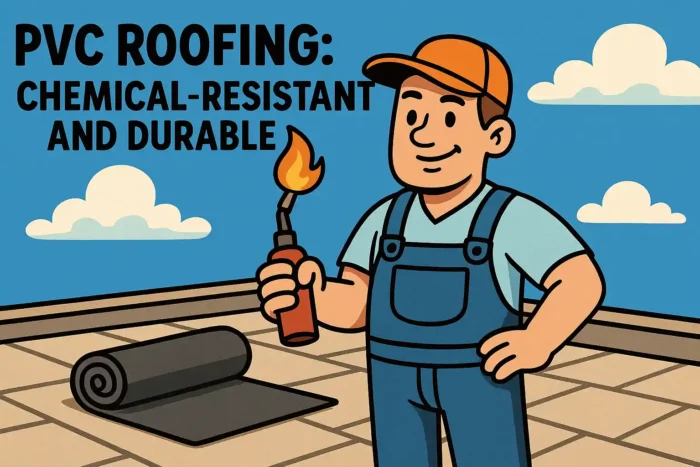When it comes to commercial roofing, the material you choose can make a significant difference — not just in upfront cost, but in durability, energy efficiency, maintenance, and long-term savings. Whether you’re replacing an old roof or building new, selecting the best roofing material for long-term value is key to protecting your investment and lowering your building’s total cost of ownership.
1. TPO Roofing: Affordable and Energy-Efficient
TPO (Thermoplastic Polyolefin) is a popular single-ply membrane known for its reflectivity and cost-effectiveness. It’s white and highly reflective, making it ideal for hot climates or buildings looking to reduce cooling costs.
Why Choose TPO:
- Reflects UV rays and reduces HVAC strain
- Resistant to tears, mold, and punctures
- Easy to install and maintain
- Lifespan: 15–25 years
Best For: Office buildings, warehouses, retail centers in sunny regions.
2. EPDM Roofing: Proven Durability
EPDM (Ethylene Propylene Diene Monomer) is a synthetic rubber membrane with a track record of durability. It’s flexible, weather-resistant, and holds up well under foot traffic or rooftop installations.
Benefits:
- Withstands harsh weather and temperature swings
- Low maintenance costs
- Lifespan: 20–30 years
- Black version absorbs heat (better for colder climates)
Best For: Commercial roofs in temperate or cold environments.
3. Metal Roofing: Long-Term Performance
Metal roofing is one of the longest-lasting roofing options available, often outlasting membrane systems by decades. It’s ideal for buildings looking for long-term ROI.
Advantages:
- Lifespan of 40–70 years
- Fire, wind, and impact resistant
- Recyclable and environmentally friendly
- Reflective coatings improve energy efficiency
Best For: Industrial buildings, institutions, and property owners seeking minimal replacements over time.

4. PVC Roofing: Chemical-Resistant and Durable
PVC (Polyvinyl Chloride) is a premium single-ply membrane designed for flat or low-slope roofs. It’s especially valuable for businesses dealing with grease or chemicals, like restaurants or factories.
Key Features:
- Resistant to oils, chemicals, and water ponding
- Reinforced seams add strength
- Easy to maintain and repair
- Lifespan: 20–30 years
Best For: Manufacturing facilities, restaurants, and hospitals.
5. Built-Up Roofing (BUR): Multi-Layer Protection
Built-up roofing involves multiple layers of bitumen and reinforcing fabrics, finished with gravel or a reflective coating. Though heavier than other systems, BUR provides strong, waterproof protection.
Benefits:
- Excellent UV and water resistance
- Great for foot traffic and durability
- Lifespan: 20–30 years
Best For: Flat roofs needing strong protection and insulation.
6. Modified Bitumen: Flexible and Strong
Modified bitumen is an asphalt-based system enhanced with rubber or plastic for added flexibility and strength. It’s often installed in two or more layers and can be heat-welded or cold-applied.
Pros:
- Good for extreme weather climates
- Resists tears and impacts
- Lifespan: 20–30 years
Best For: High-traffic roofs or facilities with heavy rooftop equipment.
Final Thoughts: Don’t Just Think Cost — Think Value
While it may be tempting to choose the cheapest option upfront, long-term value comes from considering lifespan, performance, energy efficiency, and maintenance needs. A roof that lasts longer, needs fewer repairs, and improves your building’s energy profile will deliver far more value over time.
Need help choosing the right material? Contact CMP Roofing for a personalized assessment. Our experts will evaluate your building’s structure, climate, and budget to recommend the best roofing material for long-term success.
Comments are closed here.